People talk to their devices every day — asking for directions, dictating notes, or letting an app transcribe a meeting. None of that feels unusual anymore. What makes it work under the hood is speech recognition, and in the developer world it often comes down to python speech to text. With a few open-source libraries and some smart models, spoken language can be turned into readable text in real time.
This article looks at the tools and methods that make it possible in 2025. We’ll cover the Python libraries most people start with, the role of deep learning in making recognition accurate, and the difference between running speech models offline or through cloud APIs. We’ll also look at real-world uses like streaming captions and business workflows, plus the option to build fully custom solutions when standard tools aren’t enough.
How Speech Recognition Works
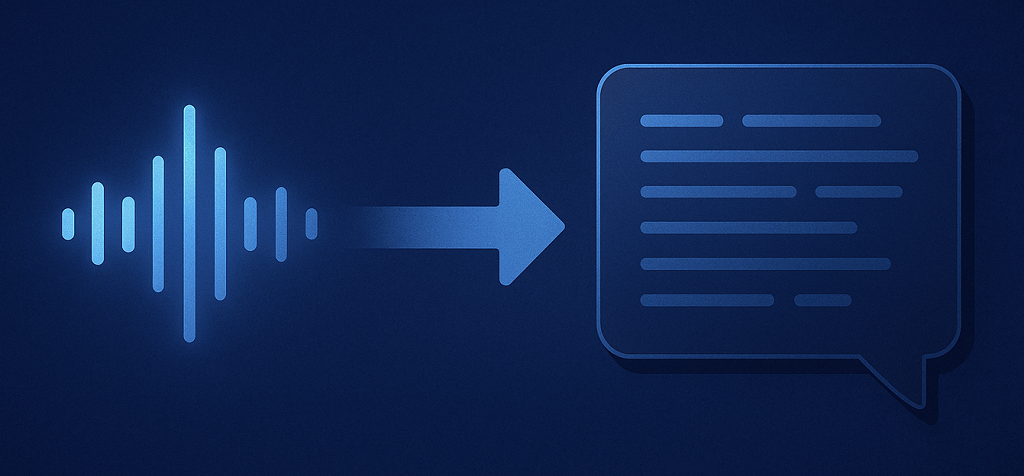
Take any sound you make — it starts as vibrations in the air. A microphone catches them and slices the noise into tiny frames of data. The software then paints those pieces into a spectrogram, basically a picture showing which frequencies were strong at each moment. From there, the system tries to catch phonemes, the small sound units that build words.
Two brains are working together here: the acoustic model figures out which sounds you actually made, while the language model guesses what you probably meant in context. That’s how “recognize speech” doesn’t come out as “wreck a nice beach.”
What changed the game was machine learning. Hand-crafted rules and early statistical tricks couldn’t handle messy audio or accents. But once deep learning came in, accuracy jumped from rough 70% to well above 90%. Suddenly, voice typing on your laptop or phone didn’t feel like a gimmick anymore.
In practice the flow is:
- Record audio → slice it into frames
- Turn it into a spectrogram
- Match sound patterns with an acoustic model
- Let the language model form words and sentences
That mix of math, context, and neural nets is what makes speech recognition feel almost effortless today.
Popular Python Speech to Text Libraries
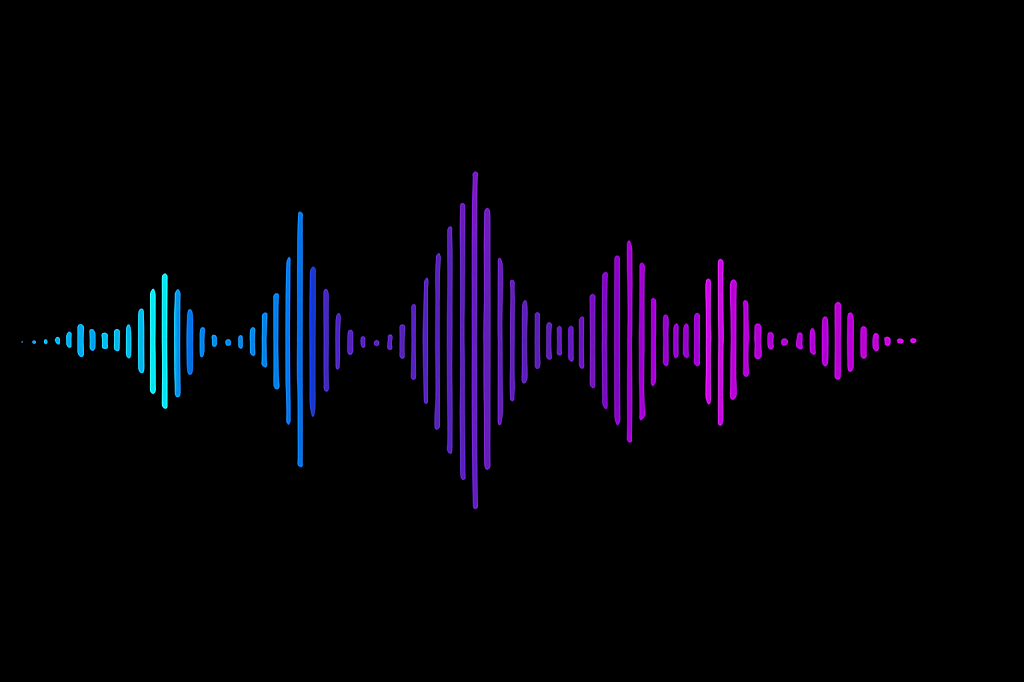
When diving into python speech to text, the library you choose shapes everything — accuracy, speed, cost, and whether you can even run your code offline. Let’s break down the most popular ones developers rely on in 2025.
| Library / Tool | Best For | Pros | Cons | Pricing / License |
|---|---|---|---|---|
| SpeechRecognition | Beginners, quick demos, class projects | Easy to use, works with multiple engines (Google, CMU Sphinx, etc.), minimal setup | Lower accuracy than deep learning models, limited customization | Open-source (MIT), free to use |
| Vosk | Offline apps, IoT devices, Raspberry Pi | Lightweight, runs on low-power devices, >20 languages supported | Models less accurate than Whisper, limited advanced features | Open-source (Apache 2.0), free |
| DeepSpeech / Coqui STT | Custom domain-specific transcription (e.g., medical, legal) | Trainable on custom datasets, full control over models, good accuracy | Requires GPU resources, setup is complex | Open-source (MPL 2.0), free |
| Whisper (OpenAI) | High-accuracy transcription, noisy audio, multilingual | Excellent accuracy, robust to accents/noisy input, dozens of languages | Heavy on resources, slower on CPU-only systems | Open-source (MIT), free; API pricing if using OpenAI’s hosted service |
SpeechRecognition
This library is often the first stop for newcomers. It’s easy to install, easy to use, and works out of the box with just a few lines of Python code. SpeechRecognition connects to different engines, including Google Web Speech API and CMU Sphinx for offline tasks. While it won’t deliver the same precision as heavy deep learning models, it’s perfect for quick demos, class projects, or small apps where setup speed matters more than accuracy.
Vosk
If you want python speech to text without depending on the cloud, Vosk is a strong option. It’s lightweight, efficient, and supports more than 20 languages. Developers often use it in Raspberry Pi projects, IoT devices, and mobile apps that can’t send constant requests to online servers. Vosk models are smaller compared to neural giants like Whisper, but that makes them fast, memory-friendly, and practical for real-world applications.
DeepSpeech and Coqui STT
Mozilla’s DeepSpeech introduced the idea of open-source deep learning for speech recognition, and Coqui STT now carries the torch. Both libraries use recurrent neural networks under the hood and can be fine-tuned with domain-specific data. That means if you’re building a medical or legal transcription tool, you can train the models to handle industry jargon. These projects require GPU power and patience, but the payoff is flexible, customizable models that you fully control.
Whisper (OpenAI)
Whisper is the current heavyweight among python voice to text tools. It supports dozens of languages, handles noisy or low-quality audio better than most alternatives, and shines in tasks like podcast transcription or video subtitling. It’s GPU-friendly, so running it locally is possible if you’ve got the hardware. The tradeoff is resource usage — Whisper is not as light as Vosk, but the accuracy gain is often worth it.
Choosing the Right Tool
Each library fits a different purpose. SpeechRecognition is great for quick wins, Vosk for offline apps, DeepSpeech/Coqui for custom training, and Whisper for cutting-edge accuracy. Your choice depends on whether you value simplicity, independence, or raw performance.
Speech to Text with Deep Learning
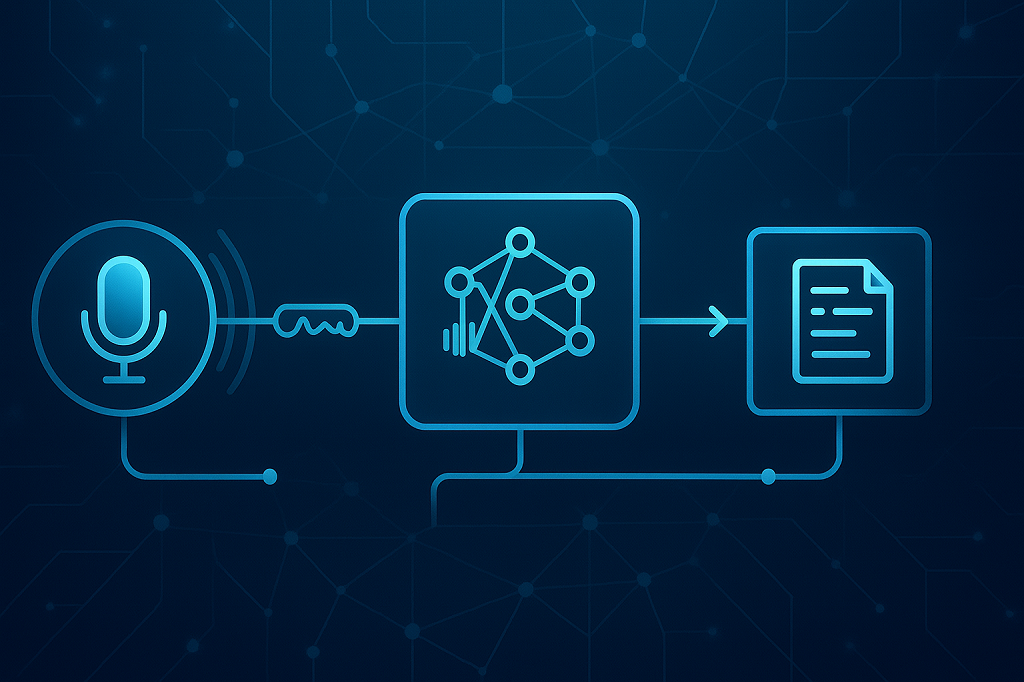
Before neural networks entered the field, speech recognition felt clunky — good for dictation, not much else. The last decade changed everything. Models got smarter, faster, and now speech can be converted into text in real time with surprising accuracy. That leap came directly from advances in speech to text deep learning.
Why Deep Learning Changed Everything
Traditional systems split speech recognition into multiple stages — signal processing, acoustic modeling, and language modeling. Deep learning stitched these parts together with end-to-end neural networks. Instead of engineers hand-tuning features, the network learns directly from massive datasets of audio and transcripts.
That shift boosted accuracy to levels once thought impossible. Real-time transcription is no longer just a demo feature — it’s reliable enough for live captioning, online meetings, and multilingual customer support. The models can adapt to different accents and background noise, making them practical outside the lab.
Frameworks & Models
Deep learning owes much of its momentum to powerful frameworks. TensorFlow and PyTorch dominate, offering developers tools to train, fine-tune, and deploy models. On top of these, pre-trained architectures like OpenAI’s Whisper and Facebook’s Wav2Vec2 set the bar for performance. Both use transformers — the same technology powering modern large language models — to recognize speech across dozens of languages.
In business, this technology is already everywhere: call centers use it to monitor conversations and analyze sentiment, while hospitals deploy it for medical transcription, saving doctors hours of manual note-taking.
The bottom line? Deep learning didn’t just make speech recognition better — it made it practical, flexible, and ready for scale.
Real-Time Speech to Text in Python
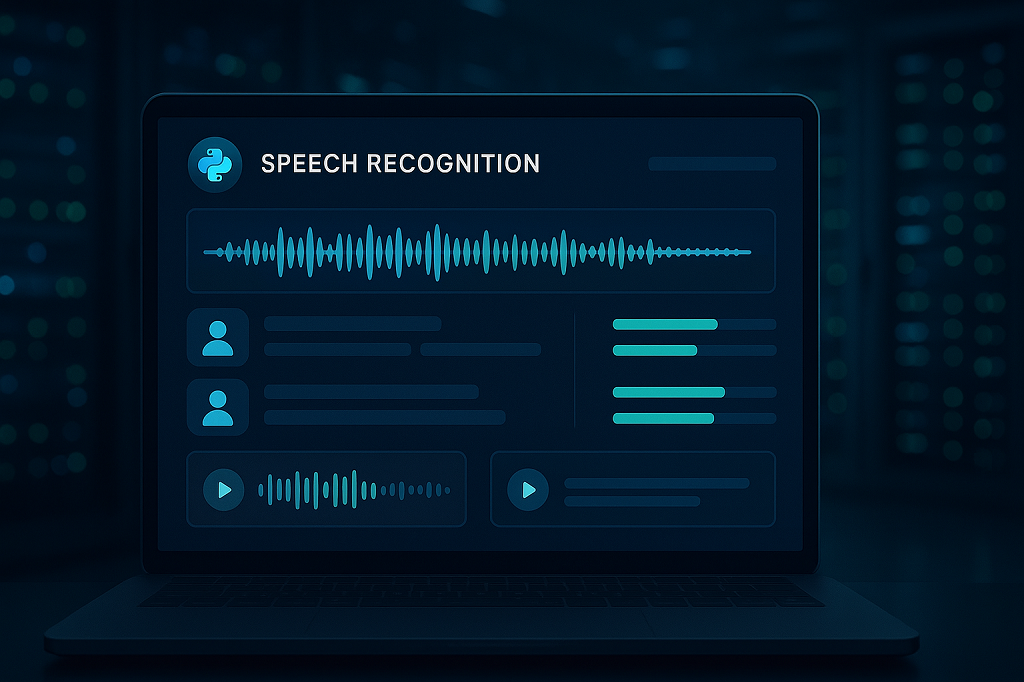
Turning spoken words into text while someone is still speaking is a different challenge from batch transcription. The main obstacle is speed: every millisecond counts. If a system lags, captions fall behind or chatbots respond awkwardly. Developers working with Python constantly wrestle with the balance between accuracy and latency.
Some of the most common use cases for real-time systems include:
- Live captioning for online events, classes, and conferences
- Streaming platforms where creators need instant subtitles
- Customer service bots that listen, process, and reply without noticeable delay
To make this work, Python libraries like Vosk and Whisper provide microphone input handling paired with WebSocket streaming. Audio chunks are captured, converted to features, and sent to a recognition model in near real time. The model then returns the text piece by piece, so the user never feels left behind.
Hardware matters just as much as code. GPU acceleration is key — it allows complex neural models to operate with only a fraction of a second of lag. That’s what transforms machine learning speech to text from a neat experiment into a dependable business tool.
When tuned correctly, these pipelines feel invisible. Users don’t think about the recognition layer at all; they just see accurate captions or get instant responses. That invisible layer is exactly what makes real-time transcription one of the most exciting areas of modern Python development.
Business Applications in 2025
Speech recognition is no longer a experimental functionality — it’s a business application in daily usage. Businesses of all types are employing speech recognition to reduce tedious work, facilitate communication, and deliver service to individuals.
Among its largest users are:
- Healthcare: doctors dictate medical notes while systems instantly generate structured records.
- Legal: courtrooms and law offices use dictation software for contracts and case transcripts.
- Media: podcasters and broadcasters add subtitles and searchable transcripts in minutes.
- Customer service: AI-powered call agents transcribe and analyze conversations to respond faster.
- Transcription providers: platforms offering human + AI blended services scale faster with automation.
The figures bear out the trend. According to Speech Technology Magazine, the speech technology market is expanding by double-digit percentages and is on course to top $50 billion by 2030, with firms making it simpler to implement machine learning frameworks, especially with cloud infrastructure.
The effect on businesses is simple: they save time keystroking and provide more convenient user experience to those who prefer or need voice interaction and make quicker decisions in real-time analytics. Whatever took a couple of hours of human effort is all achieved within a minute.
Scrile AI: Custom Speech to Text Development
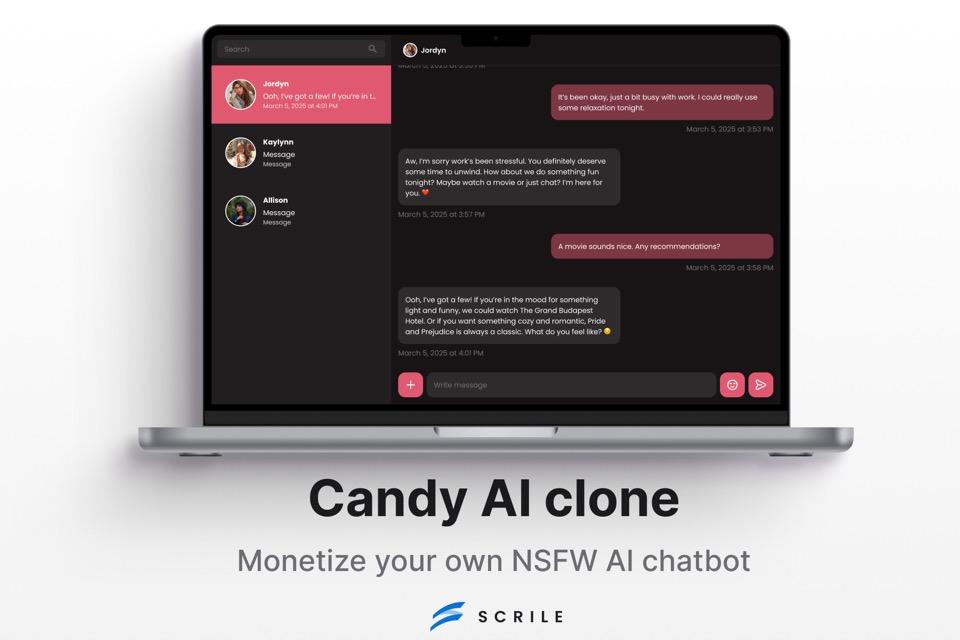
Most businesses start with ready-made APIs for transcription. They’re fast to set up but come with real limits: fixed branding, rising usage costs, and very little control over sensitive data. At some point, scaling organizations realize they need more than just another SaaS subscription.
This is where Scrile AI comes in. It’s not a platform you rent — it’s a development service that builds tailored solutions using speech to text machine learning at the core.
With Scrile AI, companies can shape the product to match their own needs:
- Fully branded UI/UX that looks like part of your ecosystem.
- Flexible deployment — on your own servers or in the cloud.
- Integration with apps you already use, from CRMs to live streaming platforms.
- Multilingual and even NSFW-ready options for industries with special requirements.
The difference becomes clear in real use cases. An edtech company can roll out a private lecture transcription tool, keeping all recordings and notes under its own security policies. A podcast network can embed auto-captioning inside its branded app without relying on an external provider.
Choosing this route means owning the technology, not just paying per request. For businesses thinking long-term, Scrile AI offers a scalable alternative that adapts as they grow, while keeping control of both data and costs.
Conclusion
Python speech-to-text in 2025 has grown into a core technology for businesses that want efficiency and accessibility. Open-source libraries and APIs show what’s possible, but they rarely give companies full control over data, branding, or future scaling. That’s where a tailored path makes sense — and exploring Scrile AI’s custom solutions can be the next step. By reaching out to the Scrile team, businesses can shape speech recognition systems around their exact needs, rather than adapting to someone else’s limits.

Polina Yan is a Technical Writer and Product Marketing Manager, specializing in helping creators launch personalized content monetization platforms. With over five years of experience writing and promoting content, Polina covers topics such as content monetization, social media strategies, digital marketing, and online business in adult industry. Her work empowers online entrepreneurs and creators to navigate the digital world with confidence and achieve their goals.

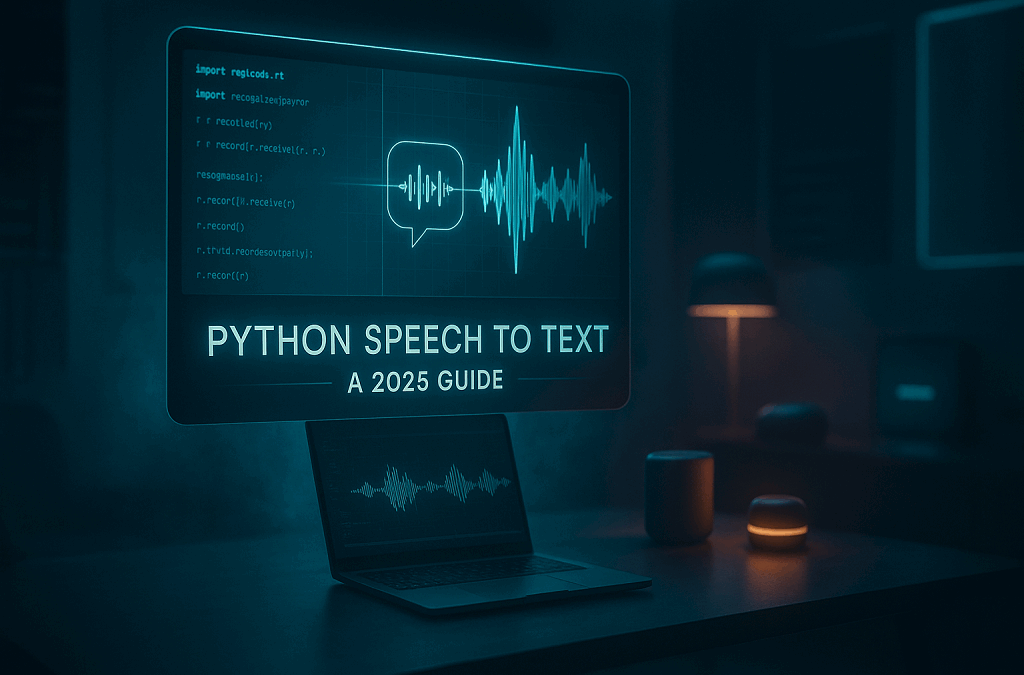
I work in healthcare IT and the section on business applications really hit home. Doctors dictating notes directly into structured records isn’t the future — it’s already happening, and it’s saving hours every day.
Honestly, I didn’t realize Python had so many speech-to-text options. I’m building a small transcription feature for my startup and was about to use Google API, but now I’m tempted to try Vosk since we need offline support. Thanks for making it so clear!
This article nailed it. I’ve been working with Whisper and Coqui STT for months, and the accuracy difference really is night and day. I love that you highlighted GPU acceleration — people underestimate how much it matters in real-time transcription.
That “recognize speech vs wreck a nice beach” line made me laugh 😂. Great explanation of how acoustic and language models work together. Articles like this make complex tech actually enjoyable to read.
It’s fascinating to see how far speech recognition has come. Just a few years ago, 70% accuracy was “good enough.” Now we’re talking about multilingual, noise-tolerant models you can run locally. Whisper and Wav2Vec2 changed everything.
This guide came at the perfect time. I’m doing a university project with Raspberry Pi and was struggling to find something light enough for real-time processing. Trying out Vosk next!
I used to rely on Whisper API for podcast transcription, but costs add up quickly. The part about Scrile AI building custom solutions really got my attention. Owning the system instead of renting it sounds like a smarter long-term move.